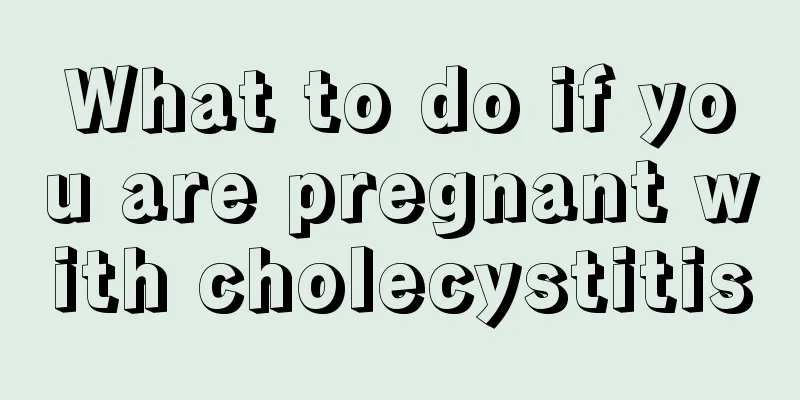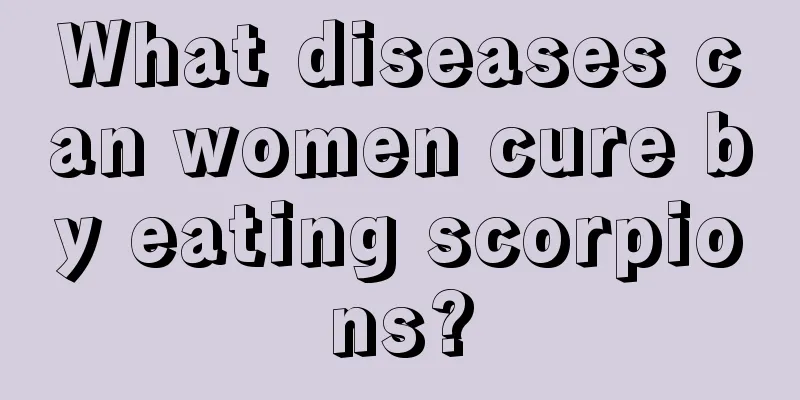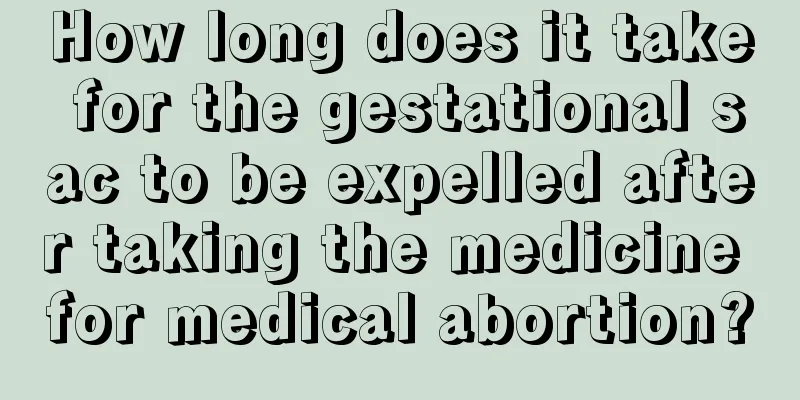What to do if you are pregnant with cholecystitis

|
If a patient with cholecystitis becomes pregnant but does not receive effective treatment and control, it will not only affect the patient's health, but also threaten the growth and development of the fetus. Therefore, it is necessary to pay attention to scientific treatment solutions and decide whether to adopt surgical or non-surgical treatment methods based on the situation. 1. Cholecystitis is a common gallbladder disease, which is more common in women. It can occur in two types: acute cholecystitis and chronic cholecystitis, often accompanied by gallstones. Bacteria that cause gallbladder inflammation can come from the intestines and spread to the gallbladder through the bile duct, or they can spread to the gallbladder from the blood or lymphatic vessels. After pregnancy, the cholesterol in the pregnant woman's blood and bile increases, and the gallbladder empties slowly. The ratio of cholesterol to bile salts in the bile changes, causing cholesterol to deposit and form stones, which can induce cholecystitis. 2. Most cases of cholecystitis in pregnant women occur in the late stages of pregnancy. Acute attacks of cholecystitis are mostly manifested by severe pain in the right upper abdomen, which is persistent and often has paroxysmal exacerbations. Quite a number of patients have radiating pain in the right shoulder or right upper waist, accompanied by fever, nausea, vomiting, etc. People with blocked gallbladder and bile duct may experience jaundice. Generally speaking, compared with cholecystitis in ordinary people, cholecystitis during pregnancy is more difficult to diagnose and treat due to its particularities. 3. The treatment of cholecystitis is divided into surgical treatment and non-surgical treatment. Once a pregnant woman develops cholecystitis, she is generally treated with medication first, using non-surgical treatment methods and the following internal medicine treatments: 1. Use antispasmodics and analgesics. 2. Use traditional Chinese medicine that can clear away heat, detoxify, soothe the liver and promote bile secretion. 3. Choose antibiotics for treatment. 4. Control your diet, avoid greasy food, eat easily digestible food, low-fat liquid or semi-liquid food. Chronic patients can eat vegetable oil appropriately without being overly cautious. 4. After the above methods, there will generally be some improvement . Pregnant women are generally not suitable for surgical treatment. However, if the condition does not improve, abdominal pain recurs, or there are symptoms of gallbladder perforation or diffuse peritonitis, surgical treatment should be performed promptly. |
<<: How long after a caesarean section can you have another baby? Women must know
>>: How long after childbirth can I replenish blood? Pay attention to the time
Recommend
Apply sunscreen, wear sun-protective clothing, and that’s it? Protect your eyes from the sun, too!
It's almost the beginning of autumn, but we&#...
Natural calcium for pregnancy preparation
Having a healthy and cute baby is the dream of ma...
What to drink when eating hot pot is too spicy? What to drink when eating hot pot to relieve the spiciness
We all know that hot pot is a common delicacy. It...
What is the liquid that women squirt?
Female squirting fluid refers to a substance secr...
What to do if you have loose stools during breastfeeding
The body of breastfeeding women is very fragile, ...
Why do women's hands feel numb?
Numbness in the hands is a common condition in ou...
Advice on staying away from tobacco
(1) Smokers should be aware of the need to quit s...
Pictures of bleeding during pregnancy
For some more experienced pregnant women, bleedin...
Why do companies recruit a large number of people but cannot retain them? If a company keeps recruiting people but keeps letting them leave, should you still stay?
When we are looking for a job, we often come acro...
What are the benefits of drinking honey lemon water? Can I drink honey lemon water when I have internal heat?
Honey lemon water is rich in vitamin C, which has...
Woman's belly button is wet and smelly
Experts have suggested that generally female frie...
How to relieve dysmenorrhea in girls
Many girls have experienced the trouble of dysmen...
Don't use hot water to wash your private parts if they itch. Treating the symptoms is the only way to cure it.
When women find their vulva itchy, how should the...
Will long-term and large-scale intake of whole milk cause cardiovascular disease? Chinese scientists have new discoveries
In traditional concepts, large amounts of milk fa...
What color should the sugar color be fried to? What degree of fried sugar color is considered good?
We all know that frying sugar color is a common c...









